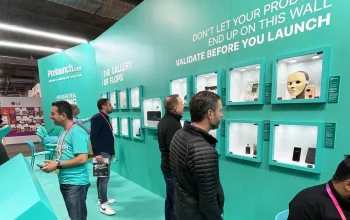Virtual reality (VR) is an experience of computer-generated immersive simulations where people inhabit an (as if) real world, while at the same time being aware that what is presented to them is computer-generated – this is not the case for less immersive technologies such as augmented and mixed reality, where virtual simulations are overlaid on the real world.
It’s not just that virtual reality can be used to alter or supplement how we experience other kinds of visual media, such as movies and TV shows, or how we train employees in simulated automated workspaces.
Entertainment
Virtual reality is viscerally immersive: by sensually surrounding the individual, virtual reality has the effect of transporting the audience to another realm. Beyond sight and sound, it can summon the power of touch (and perhaps even smell) to create a fully round reality experience.
VR is capable of much more than gaming and, for example, virtual smells are capable of being ‘played’ directly into your olfactory nerve via headphones. Whilst VR is closely associated with gaming apps, it is highly compatible with a vast array of other applications and industries.
Its capacity for presenting data in complex visual form gives engineering and scientific researchers a new tool. VR is also fast becoming a useful training facility for many sorts of physical activities.
There is a number of headsets that immerse users in 3D computer-generated virtual environment, some of which use multiple sensors with sensors and tracking mechanisms to allow virtual environments to respond to them. Other type of head-mounted display utilises portable solutions, like Samsung Gear VR, and provides an access to such phenomenon at an acceptable cost. Other VR solutions, such as Oculus Rift and HTC Vive, offer sophisticated hardware solutions for professional gamers and other VR aficionados who really want to feel VR.
Education
By transforming the learning environment of the student, virtual reality offers a deep engagement, the most realistic representation of a virtual environment so far in existence. True learning, in fact, cannot be experienced without it. It is highly educational and engaging, and should be used whenever possible, in school environments.
The realm of possibilities for Virtual Reality is seemingly endless; it could have significant application for education. Currently, educators and researchers are employing VR to enhance any educational experience. Whether it’s allowing someone to learn anatomy by seeing inside a human (or other animals), immersing someone into a data set, or taking students to an ancient ruin on another continent, VR can either create the illusion of a whole new world, or show the depths of the ocean in an unrestricted, 360-degree environment.
Virtual reality technology could be a game changer to the way people live, work and play. We can attend concerts online and avoid the long journey to the concert hall; use it in order to furnish your house; test drive your car before you buy it; buying and trying on wedding bands before we buy them; even no more retail therapy regret – shopping from home! VR being used in a safe way by firefighters, astronauts and police officers to train too.
Healthcare
It has now started to move into healthcare, in similar ways that will also benefit individual lives. VR can help train medical students and doctors. It creates scenarios for patients with mental illness or physical discomfort. It can help patient outcomes and patient experiences.
These essential features of virtual reality are immersion and interactivity.Head-mounted displays, such as Oculus Rift, HTC Vive and Gear VR, provide realistic virtual reality experiences for its users. These displays are virtual reality headsets that consist of two lenses showing images to their wearer’s eyes, and an earphone incorporated to render virtual reality sound.
VR requires a voice. An element of audio brings the virtual world closer to reality – especially for an industry that seeks entirely to simulate reality. The human nervous system is predisposed to react faster to our auditory sensory input than to the information from our eyes. Headsets for commercial-grade VR are now being brought to market to allow users to attend a concert that hasn’t happened yet, or buy furniture or a wedding band without leaving the house.
Business
This article was brought to you by Virtual Reality – a technological paradigm on the rise across a plethora of industries. For certain circles, the term ‘Virtual Reality’ still conjures up images of entertainment & gaming. However, any C-level executive with a long-term digital business transformation strategy has likely been engaged with Virtual Reality.
A combination of headset-simulated 3D environments, and sensor-mediated motion, visual, olfactory, haptic (feel) and aural inputs (sound), you can fully immerse yourself in the VR sensation. In addition, you have control over what you perceive by acting and moving with hand-held controllers and optical tracking sensors. As the man in the mirror, you become an avatar residing in an online world – in the metaverse, if you like.
There are countless possible uses for VR technology among business, industry, marketing, education, training, collaboration and so on. With VR, companies can help their employees train for tasks that might be too dangerous or expensive to practise on the real equipment; designers can interact with prototypes saving time and money (and all the materials that ordinary tangible prototypes cost in both use and disposal); data visualisations or simulations can be viewed that otherwise could not be seen.









